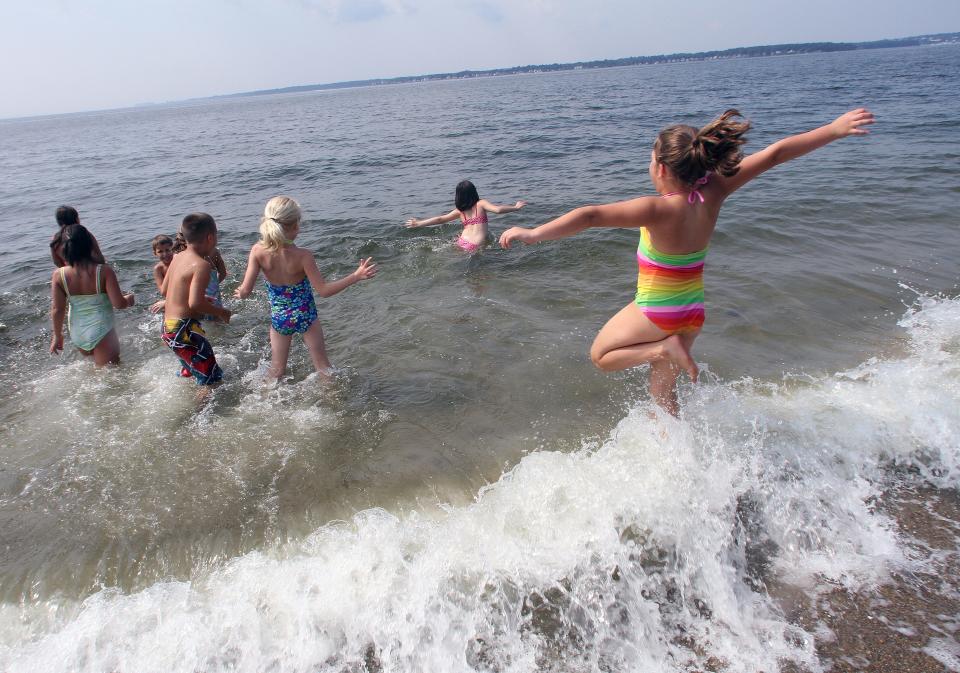Summer brings the danger of drownings. How to have a safer season. | Opinion
Dr. Jennifer Hadley is a pediatric resident at Hasbro Children's Hospital. Dr. Victoria Quinn, Dr. Yvorn Aswad and Dr. Michelle Crowley, resident physicians in pediatrics at Hasbro, contributed to this column.
The Ocean State. With 400 miles of shoreline along Narragansett Bay and the Atlantic, no one is more than 30 minutes away from the open water. All winter, families dream about the appeal of a coastal Rhode Island summer.
For those of us at Hasbro Children’s Emergency Department, the passing of winter brings the relief of fewer viral infections, but warmer temperatures herald new dangers. Unintentional injury and accidents become the leading presentations to our doors and when we hear the incoming sirens, we call our trauma team instead of our respiratory therapists.
Drowning is the leading cause of unintentional injury-related death in U.S. children ages 1 to 4 years, and is the third-leading cause of unintentional injury-related death among all children under age 19. In 2018, almost 900 U.S. children and youth died of drowning, and nearly 4,000 people in total die from drowning in the U.S. every year. Another estimated 8,000 are treated for nonfatal drowning injuries. According to the Centers for Disease Control and Prevention, for every one fatal childhood drowning, there are another eight nonfatal drownings that are seen in an emergency department.

More: RI is offering a cash bonus to attract summer lifeguards. Here's how to sign up
More: Why RI's new life-jacket rule irks some paddlers, drawing accusations of 'Big Brother'
In Rhode Island, these numbers are similarly devastating. Despite having one of the lowest rates for child and teen death in the nation, between 2016 and 2020, 23 Rhode Island children ages 1-14 died as a result of injury. Drowning was the leading cause of these deaths during this period, and at Hasbro, several children have already been seen with fatal and nonfatal drowning incidents this year.
In light of these statistics, it’s easy to feel nervous. As we just marked National Water Safety Month in May, it is the right time to ready yourself and your family with the resources necessary to have a safe and enjoyable summer.
First, educate yourself on why this matters for you. Children most at risk for drowning are those in the 0-4 age group, with a second peak in adolescence. Males account for 75% of childhood drowning victims, and the highest rates of drowning occur among Black, American Indian and Alaskan native individuals, with Black males more at risk than either white or Hispanic males.
Second, look out for how this can occur. Infants are most at risk of drowning in the home, in bathtubs or buckets; most preschool children drown in swimming pools, and adolescents are more likely to drown in natural bodies of water like ponds, lakes or the ocean.
Third, determine whether the “5 Layers of Protection” are in place for your family. The first layer includes fences, barriers and alarms, specifically four-sided fencing that completely isolates pools (required by state regulations).
The second layer is supervision. Most drowning accidents occur during non-swim times. Determine who will be responsible for direct supervision of children at all times.
The third layer is water competency. Swim skills can decrease drowning risk by 90% in children ages 1-4. The American Academy of Pediatrics does not recommend swimming lessons for children less than a year old.
More: To keep beaches safe, RI is making changes to lifeguard certification requirements
More: Cranston mayor wants to replace Budlong Pool. Here's how, and when it would open
The fourth layer is life jackets. They must fit properly, and should be used in, on or around water.
The last layer is emergency preparedness. Ask caregivers responsible for supervision of children if they are familiar with CPR and basic water rescue techniques.
With summer just around the corner, take the time to prepare and help prevent drowning.
This article originally appeared on The Providence Journal: Drowning is the leading cause of unintentional injury-related death in U.S. children ages 1 to 4 years.

